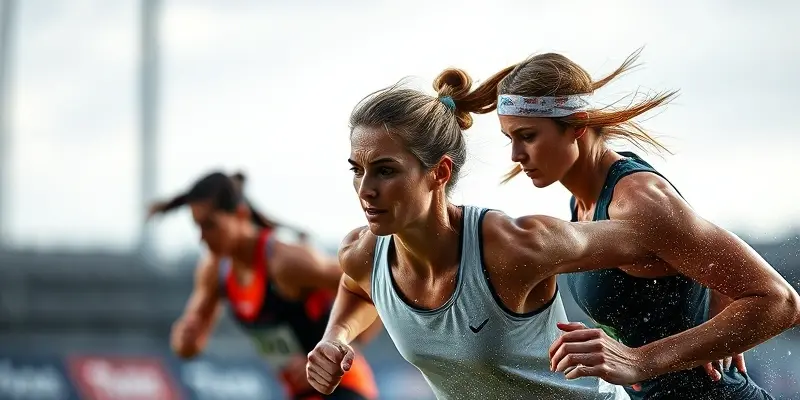Dance Fitness Injury & Recovery: A Science-Backed Guide for Every Athlete
Dance fitness brings joy, sweat, and a strong sense of achievement. But whether you’re a seasoned athlete or a newcomer, injury risk is real. The good news? Most dance-related injuries can be prevented—or recovered from efficiently—with the right strategies. Let’s dive into practical, evidence-driven guidance you can trust.
Understanding Common Dance Fitness Injuries
Every dance style has its signature moves—and its signature risks. Here are the top trouble spots and why they matter:
- Ankle Sprains: Quick pivots and jumps can twist ankles beyond their safe range.
- Knee Injuries: Sudden stops and turns strain the knee, especially if alignment isn’t perfect.
- Hip Pain: Styles like ballet or jazz, which require extreme motion, may trigger hip issues like snapping hip or femoroacetabular impingement (FAI).
- Low Back Strains: Repetitive bending, twisting, or high-impact jumps can overload your core and back.
Real-world example: A Zumba enthusiast who skips warm-ups might experience a rolled ankle during a high-energy track. A ballet student pushing for the highest leap could develop hip discomfort from overuse.
Proven Injury Prevention Strategies
Protecting your body is as important as mastering choreography. Here’s a toolkit grounded in research:
Warm-Up & Cool-Down: Non-Negotiable!
Always start with dynamic stretches and light movement. This prepares muscles and joints, reducing injury risk. Cool down after class to gently lower your heart rate and flush out lactic acid—think of it as resetting your body for next time.
Build Strength & Focus on Alignment
Regularly train your core, glutes, and lower limbs. Strong muscles support your joints and help keep your movements safe. Pay attention to your posture: Shoulders back, knees tracking over toes, pelvis in neutral. Good alignment is your injury insurance!
Wear the Right Equipment
Ditch generic sneakers for shoes designed for your dance style. Proper footwear absorbs shock and offers essential support.
Schedule Rest & Recovery
The magic happens when you let your body recover. Plan rest days, especially after tough sessions, to let muscle fibers repair and grow stronger. Overtraining is the fast track to injury.
Recovery Tips for Beginners (and Everyone Else)
Got an injury? Don’t power through pain—early action ensures better outcomes.
- Seek Professional Guidance: For persistent pain, consult a physiotherapist with experience in dance injuries.
- Modify, Don’t Quit: Gentle movement (active recovery such as walking or swimming) improves circulation and reduces soreness.
- Gradual Return: Increase dance activity only when pain-free. If you push too hard, too soon, you risk setbacks.
- Listen to Your Body: Pain is feedback, not a dare!
For a detailed step-by-step approach, check out our comprehensive injury recovery checklist to guide you through effective healing.
Nutrition: Powering Fast Recovery
Fuel is your friend. When healing, aim for:
- Plenty of Protein: Think lean meats, dairy, tofu—for muscle repair.
- Smart Carbs and Healthy Fats: Whole grains and avocados provide sustained energy and aid tissue repair.
- Micronutrients Matter: Ensure enough vitamin C (think citrus), vitamin D (sunshine or supplements), and calcium for bone and tissue healing.
Hydration is non-negotiable. Water helps flush out inflammation and keep your tissues flexible.
For deeper insight into the role of vitamin C in injury recovery, see our post on the power of vitamin C in recovery and injury prevention.
Tools & Gadgets for Smart Recovery
A few well-chosen tools can make your recovery routine more effective:
- Foam Rollers & Massage Sticks: Ease muscle knots and boost blood flow.
- Ice Packs & Heat Pads: Tackle soreness and inflammation after intense sessions.
- Compression Sleeves (when approved): Help minimize swelling and speed recovery.
Motivation and Mindset: Stay Engaged Through Rehab
An injury can be frustrating. How do you stay motivated while healing?
- Set Micro-Goals: Celebrate small wins—like pain-free stretching or a successful plank.
- Visualization Techniques: Mentally rehearse your routines. Studies show this can help boost confidence and readiness.
- Lean on Your Community: Talk to coaches, therapists, or dance buddies. Social support is proven to speed recovery and boost morale.
Learn more about visualization for healing to keep your mindset strong during recovery.
Key Insights: Stay Strong, Stay Dancing
Injury doesn’t have to sideline your fitness journey. With structured prevention routines, smart recovery, and a mindset that embraces rest as a training tool, you’ll bounce back faster and stronger. Remember: Integrating these habits isn’t just about avoiding downtime—it’s about elevating performance and ensuring you can keep enjoying dance for years to come.
Ready to dance smart? Your body will thank you!
Authored by the GymPulse Club fitness team. Got a question about injury or recovery? Share it with us below—your next move might help someone else stay active too!

